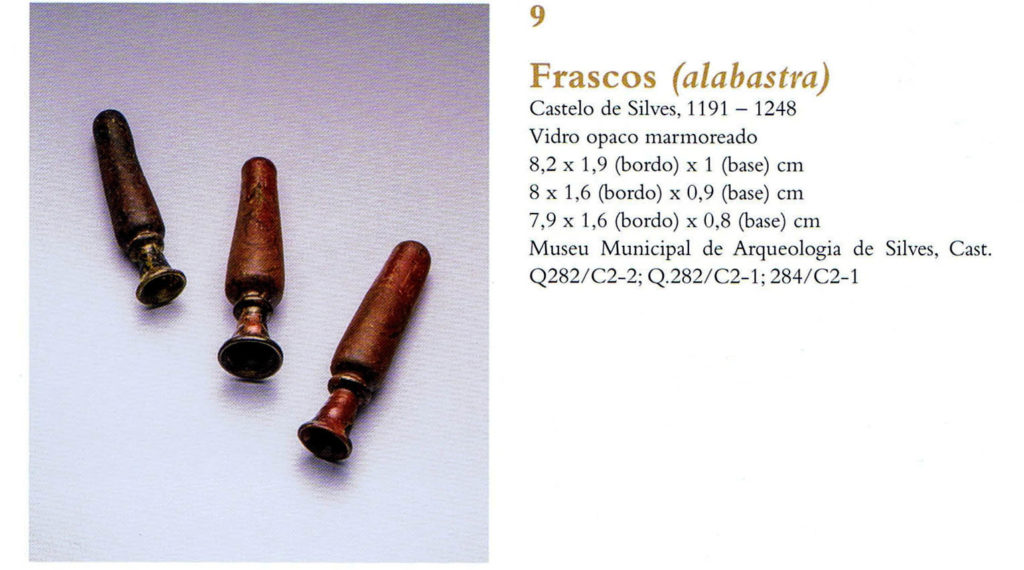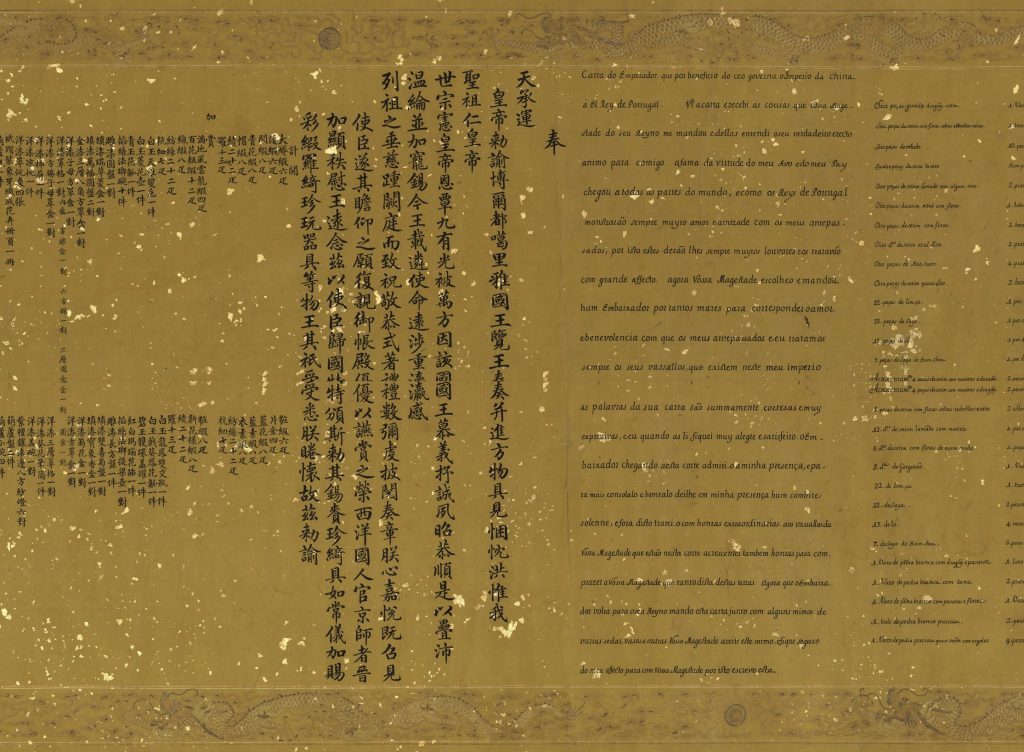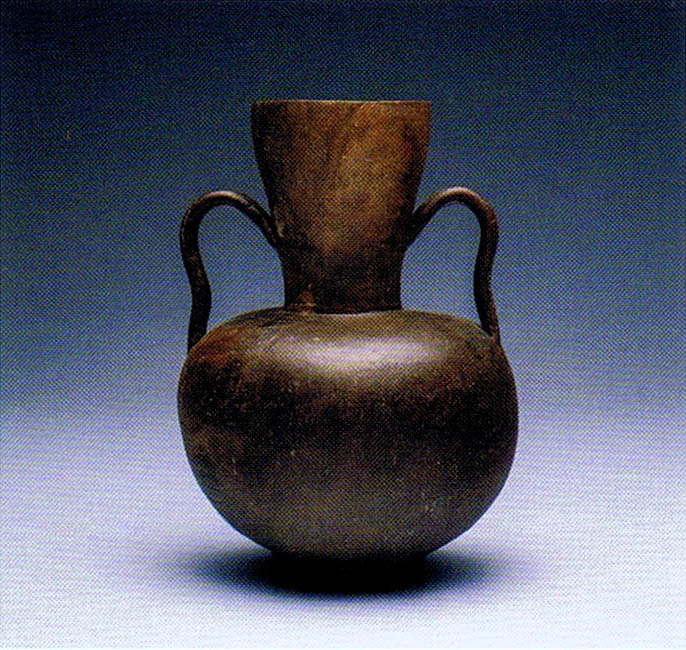Nine delicate pieces from the Silves Archeology Museum can now be seen at the Museu do Oriente, in Lisbon, in the exhibition “Three European Embassies to China”, on display until 21 April.
They are two translucent glass flasks, a bowl, also translucent glass, a set of three small marbled opaque glass flasks, which should contain perfumes, and a ceramic bowl, all dating from the XNUMXth or XNUMXth centuries. There is also another, older ceramic cup from the ninth century.
These objects from the luxurious daily life of the Muslim peoples who inhabited Silves in that era were discovered in archaeological excavations carried out in the Castle of Silves and also in the Islamic house on Rua da Arrochela, also in the historic center of the city, by the couple of archaeologists Rosa and Mário Varela Gomes.
The objects of the Museum of Silves are among seventy pieces by private collectors, institutions such as the Secret Vatican Archive, Torre do Tombo, the National Library and the Museum of Pharmacy, among others, and from the Fundação Oriente's own collection.

The Algarve pieces are in one of the three cores of the exhibition, the one dedicated to Friar Lourenço de Portugal, appointed ambassador to the Mongol Empire by Pope Innocent IV in 1245, an embassy organized by the Vatican in political representation of the whole of Europe.
In an interview with Sul Informação, Rosa Varela Gomes explained that what the exhibition's scientific commissioner asked her for were pieces of Chinese influence brought by the Muslim communities.
The archaeologist pointed out that «among the exceptional pieces that are in this exhibition, there are also our little pieces from Silves and that is very important».
The Museu do Oriente itself explains that the exhibition includes «a remarkable set of Islamic luxury objects, originating from the south of Portugal (a part of which produced in the Middle and Near East), but identical to those found along the Indian Ocean, which illustrates the global circulation of goods and people in the XNUMXth century».

Exhibition presents the “Three European Embassies to China”
Carried out by the Portuguese over five centuries (XIII to XVIII), the history of political-diplomatic contacts between Europe and China is made known in the exhibition “Three European Embassies to China”.
It is «a history with multiple cycles, advances and setbacks, understandings and ruptures, but which had as a constant role several Portuguese, such as Tomé Pires, Francisco Pacheco de Sampaio, and Lourenço de Portugal, explains the Museu do Oriente on your website.
It is around these three protagonists that the exhibition is structured, which is why it is divided into three groups, with around seventy pieces by private collectors, from institutions such as the Secret Vatican Archive, Torre do Tombo, the National Library and the Pharmacy Museum , among others, and from the Fundação Oriente's own estate.
The nucleus dedicated to Friar Lourenço de Portugal, appointed ambassador to the Mongol Empire by Pope Innocent IV in 1245, underlines the fact that this is an embassy organized by the Vatican in political representation of the whole of Europe. Recording this rare event, there are two papal bulls, one of which in an original document from Torre do Tombo and dating from 1245, and the other a reproduction of the Vatican's Secret Archive.
Also to be seen in this nucleus, a remarkable set of Islamic luxury objects, originating from the south of Portugal (a part of which produced in the Middle and Near East) but identical to those found along the Indian Ocean, which illustrates the global circulation of goods and people in the XNUMXth century.
Dedicated to Tomé Pires and his embassy to China, in 1517 - the first official diplomatic mission of a European nation to the Ming dynasty -, the second nucleus addresses the path of this apothecary/pharmacist, author of the Oriental Summa, the first and most complete description XNUMXth century European version of Asia, whose manuscript can be seen in the exhibition.
Also in this nucleus, the objects that illustrate the original profession of Tomé Pires stand out, such as albarelos, mortars and bezoar stones.
The third nucleus is centered on Francisco Pacheco de Sampaio's embassy to Emperor Qianlong, of the Qing dynasty, in 1752, at a delicate time for Portuguese interests in Macau and China.
Here is shown to the public, for the first time in Portugal, the impressive letter of Emperor Qianlong to the monarch D. José I, dated 1753 – four meters long and written in three languages: Manchu, Portuguese and Chinese.
In this nucleus, pieces of Chinese art from the XNUMXth century are also exhibited, namely a punch bowl with images from the factories of Cantão, belonging to the “Old Cunha Alves Collection”, recently acquired by the Fundação Oriente.
In each of the three nuclei, the biographical trajectory of the three diplomats is understood in their time and in a global context, especially in Europe and Asia.
As part of the commemorations of the European Year of Cultural Heritage, the exhibition is curated by Jorge Santos Alves, professor and coordinator of the Institute of Oriental Studies of the Catholic University of Portugal.
A show it opened on the 8th of November and can be seen until the 21st of April, at the Lisbon museum.



















Comments